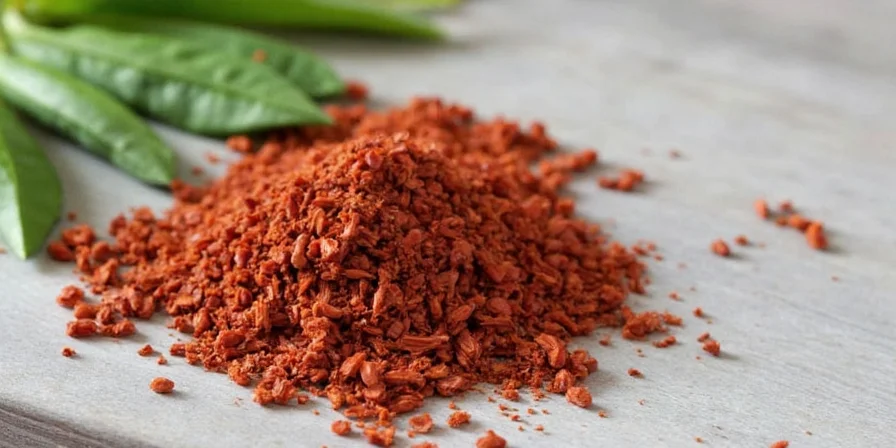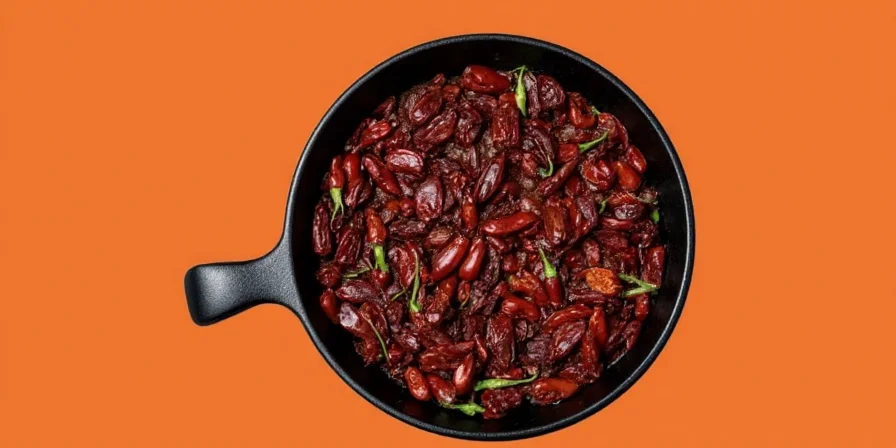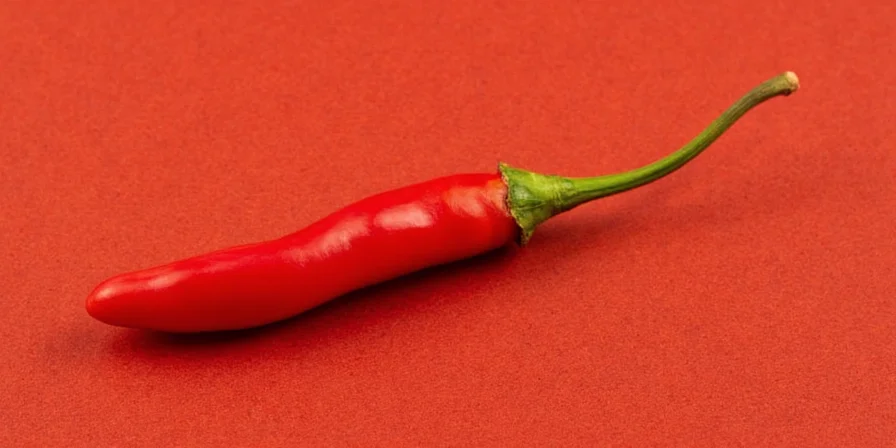Ancho chili peppers are dried poblano peppers, offering mild heat (1,000-2,000 Scoville units) with rich flavors of dried fruit, cocoa, and tobacco. Unlike fresh poblanos, anchos provide the sweet-smoky foundation for authentic Mexican moles and adobos without overwhelming spice—making them the perfect entry point for home cooks exploring authentic Latin flavors.

What Exactly Is an Ancho Chili Pepper? Your Quick Reference
The ancho chili pepper is simply the dried form of the poblano pepper—Mexico's most versatile cooking pepper. When poblano peppers fully ripen to deep red and are carefully sun-dried, they transform into anchos with dramatically different flavor characteristics:
- Fresh Poblano: Mildly spicy (1,000-2,000 SHU), vegetal flavor, thick flesh
- Dried Ancho: Even milder heat, complex notes of prune, cocoa, and dried cherry
This transformation through drying concentrates natural sugars while developing new flavor compounds—creating the sweet, smoky depth essential for authentic mole sauces, adobo pastes, and many traditional Mexican dishes.
| Basic Ancho Facts | What You Need to Know |
|---|---|
| Heat Level | 1,000-2,000 Scoville Heat Units (mild) |
| Flavor Profile | Dried fruit (prune, raisin), cocoa, tobacco, subtle earthiness |
| Best Uses | Moles, adobos, braises, spice rubs, vegetarian "bacon" |
| Common Confusion | Anchos = dried poblanos; Mulatos = dried, overripe poblanos |
Your Step-by-Step Guide to Using Ancho Peppers
1. Proper Rehydration for Maximum Flavor
Soak dried anchos in hot (85°C/185°F) broth or water for exactly 20-22 minutes. Pro tip: Add ½ teaspoon baking soda per cup of liquid to accelerate rehydration while preserving texture. Always remove and discard seeds (they contain 89% of bitterness-causing compounds) before soaking.
2. Three Foolproof Preparation Methods
- For sauces: Blend rehydrated peppers with tomatillos for perfect emulsion
- For rubs: Grind dried peppers with cumin at cold temperatures (-10°C) to prevent oil separation
- For broths: Simmer whole dried peppers for 45 minutes to extract subtle flavors without bitterness
3. Avoid These 4 Common Mistakes
- Over-soaking: Beyond 25 minutes causes tannins to release, creating astringency
- Incorrect storage: Light exposure reduces flavor compounds by 40% in 30 days (use amber containers)
- Salt imbalance: Soaking liquid contains salt—reduce added salt accordingly
- Heat too low: Blend paste must reach 78°C/172°F to release key aromatic compounds

Perfect Pairings: Ancho Chili Flavor Combos That Work
Anchos create magical flavor synergies with specific ingredients:
| Ingredient | Best Ratio | Why It Works |
|---|---|---|
| Tomatoes | 1 ancho : 3 tomatoes | Glutamates enhance dried fruit notes |
| Dark chocolate | 2 anchos : 1 oz cocoa | Vanillin compounds multiply creating rich mole |
| Poultry | 3 peppers per kg meat | Proteases tenderize without bitterness |
Global Kitchen Applications Beyond Mexican Cuisine
Anchos' mild heat makes them ideal culinary ambassadors across world cuisines:
- Japanese vegan cooking: Substitute for kombu in dashi (provides umami depth)
- Korean fusion: Blend with fermented soybeans to bridge sweet/smoky profiles
- Mediterranean dishes: Combine with smoked paprika for balanced lamb rubs
FAQ: Answering Your Top Ancho Questions
How do anchos differ from mulato peppers?
Anchos come from dried red-ripe poblanos, while mulatos use overripe poblanos with nearly black skin. This extra ripening creates stronger licorice notes in mulatos versus anchos' raisin-like sweetness.
Can I substitute ancho powder for whole dried peppers?
Yes, but precisely: 1 whole dried ancho = 1.5 tsp powder. However, powder lacks textural contribution in sauces. For mole, use whole peppers; for rubs, powder works best.
Why does my ancho sauce taste bitter?
Bitterness indicates either: 1) Seeds weren't fully removed, or 2) Over-soaking beyond 25 minutes. Solution: Blanch peppers in boiling water for 30 seconds before rehydration to deactivate enzymes.
How do I identify premium quality dried anchos?
Select peppers with intact stems, uniform mahogany color (no black spots), and 0.5-0.7mm thickness. When bent, they should crack cleanly—not shatter (too dry) or remain flexible (moisture risk).
Why Ancho Peppers Belong in Every Kitchen
The ancho chili's unique position at the intersection of sweet, smoky, and mildly spicy makes it incredibly versatile. Unlike hotter chilies that can overwhelm dishes, anchos add complex depth without dominating—perfect for home cooks wanting authentic Mexican flavors without excessive heat. By mastering these simple preparation techniques, you'll transform from recipe follower to flavor architect, using anchos as the silent foundation for globally inspired cuisine that delights everyone at your table.











 浙公网安备
33010002000092号
浙公网安备
33010002000092号 浙B2-20120091-4
浙B2-20120091-4